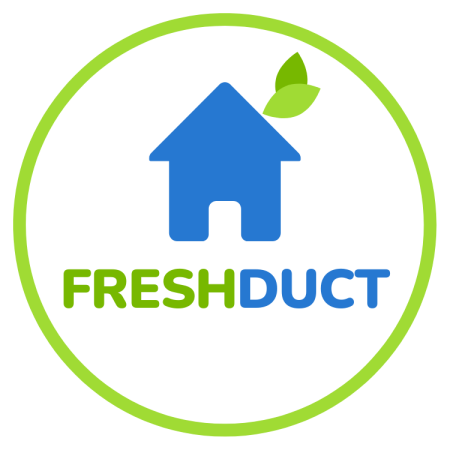Allergies can be a major hassle, causing sneezing, coughing, and a range of other uncomfortable symptoms. Many people don’t realise that part of the problem might be lurking in their own homes – specifically, in their air ducts. Dirty air ducts can collect dust, pet dander, mould, and other allergens that circulate through the air every time you use your HVAC system.
When you turn on your heating or cooling, these particles are pushed into the air you breathe, triggering allergies and making symptoms worse. Even if you keep your home clean, these hidden contaminants can still cause problems. This is why air duct cleaning is so important for people with allergies. Removing these particles from your ducts can significantly improve indoor air quality and provide much-needed relief.
In this article, we’ll explore the link between dirty air ducts and allergies, highlight the benefits of cleaning your air ducts, and identify signs that your ducts might be causing allergic reactions. We’ll also guide you through the steps for effectively cleaning your air ducts to help alleviate your allergy symptoms. With the right information and a bit of effort, you can make your home a healthier place to live.
The Connection Between Dirty Air Ducts and Allergies
Dirty air ducts can significantly worsen allergy symptoms by spreading contaminants throughout your home. When you turn on your HVAC system, any dust, mould, pet dander, or pollen trapped in the ducts gets blown into the air you breathe. These particles can irritate your respiratory system and trigger allergic reactions, such as sneezing, coughing, and itchy eyes.
Common allergens found in air ducts include dust mites, pet fur, and mould spores. Dust mites are tiny creatures that thrive in warm, humid environments and feed on dead skin cells. Pet fur and dander can easily become trapped in air ducts, particularly if you have pets that shed a lot. Mould spores can grow in damp areas of your ductwork, releasing allergens into the air. By understanding these connections, it becomes clear how essential clean air ducts are for reducing indoor allergens.
Benefits of Air Duct Cleaning for Allergy Sufferers
Cleaning your air ducts can significantly reduce the number of common indoor allergens. When your ducts are clean, dust mites, pet dander, and mould spores have fewer places to hide and accumulate. This means fewer allergens are circulating through your home, providing relief for allergy sufferers. Regular air duct cleaning helps to maintain a cleaner living environment, which can alleviate allergy symptoms and improve overall health.
Improved air quality is another major benefit of air duct cleaning. When allergens and contaminants are removed from your ductwork, the air you breathe becomes fresher and healthier. This can lead to a reduction in respiratory issues and make your home more comfortable to live in. Clean air ducts ensure your HVAC system works more efficiently, helping to maintain a consistent indoor temperature and reducing energy costs. By keeping your ducts clean, you can enjoy a healthier home with fewer allergens and better air quality.
Signs Your Air Ducts Might Be Contributing to Allergies
Recognising the signs that your air ducts might be contributing to allergies is important. One clear sign is if you or your family members experience more frequent or severe allergy symptoms when indoors. These symptoms can include sneezing, coughing, itchy eyes, and even difficulty breathing. If these issues worsen when your HVAC system is running, it’s a strong indicator that your air ducts might be the culprit.
Another observational sign is the presence of excess dust around your home. If you notice dust accumulating quickly on surfaces, especially near air vents, it could mean your air ducts are distributing dust throughout your living space. You might also observe mould or a musty smell, particularly when the HVAC system is on. This can suggest that mould spores are being blown into your home, exacerbating allergy symptoms. By being attentive to these signs, you can take proactive steps to address potential air duct issues.
Steps to Take for Allergy Relief Through Air Duct Cleaning
Taking steps to clean your air ducts can provide significant allergy relief. Begin by preparing your home for the cleaning process. Turn off your HVAC system and cover furniture and belongings near the vents to protect them from dust. Gather your cleaning tools, such as brushes, vacuums, and screwdrivers, to ensure you’re ready to tackle the task.
The cleaning process involves a few key steps. First, remove vent covers and clean them thoroughly. Use a vacuum to remove dust and debris from inside the ducts, reaching as far in as possible. A brush can help dislodge stubborn dirt and mould. Finally, wipe down the interior of the ducts with a damp cloth to remove any remaining particles. Remember to change your HVAC filters regularly to prevent future build-up. By following these steps, you can significantly reduce allergens in your home and improve your overall air quality.
Conclusion
Keeping your air ducts clean plays a crucial role in managing and reducing allergy symptoms. Dirty air ducts can harbour dust, mould, pet dander, and other allergens that circulate through your home, impacting the air you breathe. Identifying the signs that your air ducts might be contributing to allergies enables you to take timely action and seek appropriate cleaning solutions.
By understanding the connection between clean air ducts and improved indoor air quality, you can make informed decisions that benefit your health and wellbeing. Regular air duct cleaning helps eliminate common allergens and creates a healthier living environment. It’s an investment in your home and your health that offers long-term benefits.
If you’re experiencing allergy symptoms and suspect your air ducts might be to blame, consider professional cleaning services. Fresh Duct provides top-notch air duct cleaning services in Melbourne at affordable prices. Contact Fresh Duct today to schedule an appointment and breathe easier in a dust-free home.
